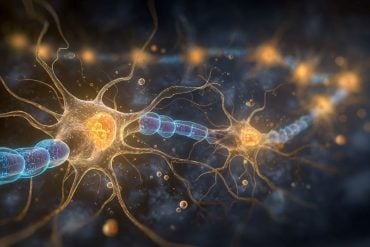Summary: A new study links satellite data with brain imaging to reveal how environmental factors like light pollution, green spaces, and urban density affect the mental health and brain development of children. Researchers examined data from over 11,800 children in 21 U.S. cities, finding links between physical surroundings and brain structure.
They observed that green areas correlated with positive cognitive health, while light pollution and urban density were associated with less favorable outcomes. This study highlights the critical role of environmental quality in child brain development, with potential implications for future urban planning. The findings, part of the ABCD Study, open new pathways for understanding how surroundings impact youth mental health.
Key Facts:
- Satellite imagery links environmental features to brain health in children.
- Green spaces are linked to higher brain health indicators; light pollution to lower.
- Data from 11,800 children shows physical surroundings impact brain structure.
Source: Georgia State University
A pioneering new study links satellite and brain imaging data to identify how environmental factors can impact mental health, cognition and brain development in young people.
The research, published in the journal Nature Mental Health, is part of a collaboration involving a team of university researchers from around the world led by experts in the tri-institutional Center for Translational Research in Neuroimaging and Data Science (TReNDS Center) based at Georgia State University and New Light Technologies.

The National Institutes of Health-funded study, “Urban-Satellite Estimates in the ABCD Study: Linking Neuroimaging and Mental Health to Satellite Imagery Measurements of Macro Environmental Factors,” represents an advance in understanding how specific environmental conditions may impact the brains of young people.
The study’s senior author and principal investigator, Vince Calhoun, is a Georgia Research Alliance Eminent Scholar and Distinguished University Professor of Psychology at Georgia State with faculty appointments at Georgia Tech and Emory University, and leads the collaborative TReNDS Center.
“The findings highlight the importance of the urban environment in mental health. We see a critical window during childhood and adolescence where environmental factors can shape future cognitive and behavioral development,” Calhoun said.
Researchers used a dataset from the Adolescent Brain Cognitive Development (ABCD) Study, which is the largest ongoing study on child brain development in the U.S. For the study, the team analyzed data collected from 11,800 children across 21 U.S. cities.
Calhoun said by linking fMRI imaging with satellite data, including the location of study participants, researchers were able to more robustly identify how the physical environment influences cognition and mental health outcomes in children ages 9 to 10.
Collaborating closely with the ABCD team, the researchers released their results as part of ABCD Data Release 5.0. This enables the research community to address critical questions regarding the connection between the environment and mental health.
Lead author and New Light Technologies Chief Scientist Ran Goldblatt said researchers analyzed satellite-based observations, including different types of land cover and land use and the amount of light emitted at night as captured by satellites.
These “UrbanSat” data can be coupled to neuroimaging and behavioral measures to provide insights.
“The ABCD dataset provides a unique opportunity for a much deeper understanding of associations between a range of indicators of the complex physical urban environment and their impacts on mental health,” Goldblatt said.
“This dataset also allows us to observe dynamic environmental changes and their impact on mental health over time, pinpointing specific interventions to boost mental well-being in various communities.”
The study looked at how land is used, including factors like light pollution and the number of buildings in an area, as a way to understand the area’s social and economic status.
The researchers found that places with more light at night and more buildings tended to have lower levels of parental education and household income, while areas with more trees and plants were linked to higher education and income.
“With the precise, objective measurements of environmental aspects such as greenspaces, the density of urban areas and water bodies, the ABCD dataset can enrich our understanding of how physical surroundings impact brain activity through diverse complex physiological, psychological and social processes,” Calhoun said.
“In this new study, we see that unique environmental and physical features may impact the extent and patterns of the brain’s gray and white matter and its functional network connectivity.”
The international, interdisciplinary team of researchers included experts from Heidelberg University in Mannheim, Germany; Rutgers University in New Brunswick, N.J.; New York Medical College School of Medicine in Valhalla, N.Y.; the University of California San Diego; the University of Southern California in Los Angeles; the Laureate Institute for Brain Research in Tulsa, Okla.; Tianjin Medical University General Hospital in Tianjin, China; and the Centre for Population Neuroscience and Stratified Medicine (PONS) in Berlin.
About this neurodevelopment research news
Author: Noelle Reetz
Source: Georgia State University
Contact: Noelle Reetz – Georgia State University
Image: The image is credited to Neuroscience News
Original Research: Closed access.
“Linking neuroimaging and mental health data from the ABCD Study to UrbanSat measurements of macro environmental factors” by Vince Calhoun et al. Nature Mental Health
Abstract
Linking neuroimaging and mental health data from the ABCD Study to UrbanSat measurements of macro environmental factors
Although numerous studies over the past decade have highlighted the influence of environmental factors on mental health, globally applicable data on physical surroundings such as land cover and urbanicity are still limited. The urban environment is complex and composed of many interacting factors.
To understand how urban living affects mental health, simultaneous measures of multiple environmental factors need to be related to symptoms of mental illness, while considering the underlying brain structure and function.
So far, most studies have assessed individual urban environmental factors, such as greenness, in isolation and related them to individual symptoms of mental illness.
We have refined the satellite-based ‘Urban Satellite’ (UrbanSat) measures, consisting of 11 satellite-data-derived environmental indicators, and linked them through residential addresses with participants of the Adolescent Brain Cognitive Development (ABCD) Study.
The ABCD Study is the largest ongoing longitudinal and observational study exploring brain development and child health, involving 11,800 children, assessed at 9–16 years of age, from 21 sites across the USA.
Here we describe linking of the ABCD Study data with UrbanSat variables, including each subject’s residential address at their baseline visit, including land cover and land use, nighttime lights and population characteristics.
We also highlight and discuss important links of the satellite-data variables to the default mode network clustering coefficient and cognition.
This comprehensive dataset provides an important tool for advancing neurobehavioral research on urbanicity during the critical developmental periods of childhood and adolescence.






